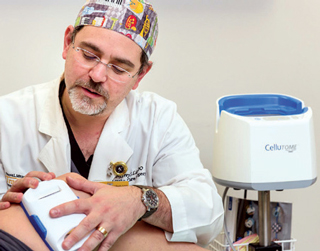
A recently developed skin graft treatment may help speed up the healing process for chronic wounds like pressure sores and diabetic ulcers — and keep them from coming back.
That’s according to a new study from the University of Missouri School of Medicine, which tested a new autograft system that helped treat different types of chronic wounds. The system, which the school didn’t develop itself, harvests the top layer of skin in a minimally invasive procedure that can be performed in an outpatient setting.
The treatment in question helped cut healthcare costs by an average of $1,153 per patient.
The study was led by
Jeffrey Litt, D.O., who noted that “current treatments such as moist dressings, frequent irrigations and wound cleaning are not always enough to ensure that healing occurs in high-risk patients.”
Litt’s research found that for eight of the 13 patients studied, the autograft system significantly sped up healing times; four of the patients had fully healed wounds in less than a month. Patients treated with the system also had no wound recurrence, a complication that often comes with patient populations at high risk for chronic wounds.
“Given that, and the healthcare cost savings, we feel that this new approach to wound care is beneficial to everyone,” Litt said.
Results of the study were published in The Cureus Journal of Medical Science in late 2016.
From the March 01, 2017 Issue of McKnight's Long-Term Care News




